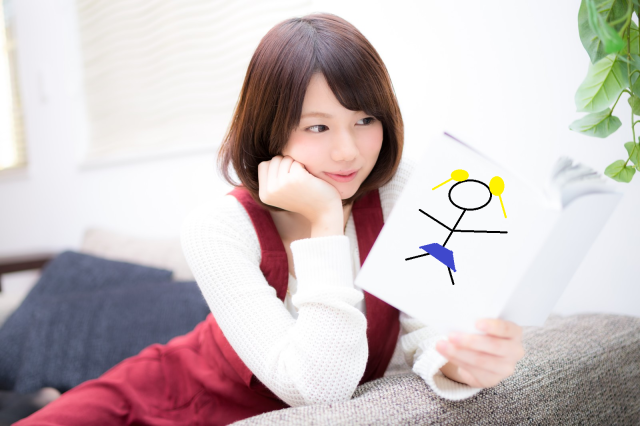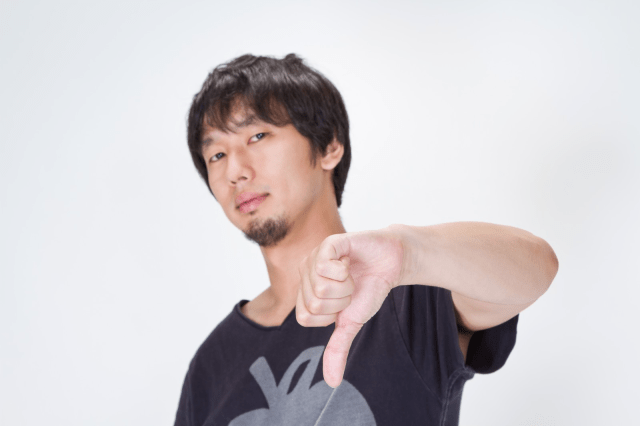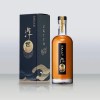
With so many manga to choose from, looking for one you don’t want to look at might just be crazy enough to work.
“Lots of manga to choose from” doesn’t seem like it should be a problem, and for many otaku, who awaken to their love of animation and comics during their teen years, it’s not. But when adult life hits, grown-up responsibilities gradually chip away at your amount of free time and the practicality of staying up until 2 in the morning every day reading comics.
As leisure time becomes more precious, “just read everything” stops being an option, and finding a series you truly enjoy becomes the difference between a refreshing hour or two of after-work entertainment or a waste of an entire evening. But with mountains of manga being published these days, how do you mine the gems that are really interesting reads? Japanese Twitter user @minetabby recently shared a unique, and seemingly very counterintuitive, method.
むかし友人に「面白い漫画ってどうやって見つけるの」って言われて「表紙の絵がクソ下手でも3巻以上出てる漫画は絶対に面白い」って返した
— 地雷ねこ (@minetabby) May 13, 2020
@minetabby’s strategy, which originally comes from a friend, is to first search for a manga that has “crappy cover artwork.” Next, check how many collected volumes of the series have been published. If it’s three or more, the manga will, “absolutely,” be worth reading.
On the surface, the “crappy cover” plan seems like it’d immediately backfire. Art aesthetics are a key part of what makes manga manga. Take away the pictures and they’d be novels (novels with sound effects, but still, novels). So why go out of your way to search for a series with art you don’t like?
The tweet doesn’t say, but a few ideas spring to mind. First, while it’s true that a manga without art would be a novel, a manga without words would be just an art collection. It’s the mix of pictures and words that makes it a manga, so if a manga can make it to three collected volumes without appealing artwork, it stands to reason that it must be making up for the sub-par art with a more-interesting-than-average story, themes, and/or characterizations.
In Japan, almost all manga is published in weekly serialized format, in anthologies that constantly swap out unpopular series and replace them with new ones. Individual series’ collected volumes usually contain about a dozen chapters, so by the time a manga makes it to its third volume, it’s been in serialization for about nine months, plus any lead time between when the serialized chapters appeared and the collected volume was printed and distributed. With the Japanese manga market being hyper competitive, that’s more time than most publishers are willing to grant an underperforming title, so the combination of off-putting art plus longevity suggests that there must be something special that’s made a fanbase latch onto it.
There’s also likely one more factor at play. While it’s an oft-repeated exaggeration that all anime and manga characters look alike, it’s definitely true that broad design trends periodically ripple out throughout the industry. It’s not at all hard for publishers to find artists who can draw, with passable quality, in whatever the current flavor of the month style is. With OK-quality art in abundance, any manga that’s standing out from the norm enough to seem “crappy” probably isn’t interested in trying to parrot the biggest mainstream hits, and that willingness to do its own thing just might lead you to a series that offers you something you can’t get anywhere else.
Related: Twitter/@minetabby via Jin
Top image: Pakutaso (edited by SoraNews24
Insert images: Pakutaso
● Want to hear about SoraNews24’s latest articles as soon as they’re published? Follow us on Facebook and Twitter!


 Manga Art Hotel Tokyo welcomes foreign guests with over 5,000 manga, including English editions
Manga Art Hotel Tokyo welcomes foreign guests with over 5,000 manga, including English editions The 10 best manga to read in 2022, as recommended by Japanese bookstores
The 10 best manga to read in 2022, as recommended by Japanese bookstores Massive manga mural takes over Tokyo station to celebrate Jujutsu Kaisen【Photos】
Massive manga mural takes over Tokyo station to celebrate Jujutsu Kaisen【Photos】 Creator of Japan’s first pole dancing manga talks with our pole-dancing reporter【Interview】
Creator of Japan’s first pole dancing manga talks with our pole-dancing reporter【Interview】 Manga Art Hotel Tokyo: What it’s like to spend a night surrounded by 5,000 Japanese manga
Manga Art Hotel Tokyo: What it’s like to spend a night surrounded by 5,000 Japanese manga Studio Ghibli releases new range of cardigans for anime fans
Studio Ghibli releases new range of cardigans for anime fans Kyoto Whopper divides customers at Burger King Japan
Kyoto Whopper divides customers at Burger King Japan Celebrating Good Couple’s Day in Japan…by getting our significant others to dress us
Celebrating Good Couple’s Day in Japan…by getting our significant others to dress us Taking the Kyoto overnight bus for the first time
Taking the Kyoto overnight bus for the first time Want some great ramen in Akihabara? Then head to this…karaoke joint?!?
Want some great ramen in Akihabara? Then head to this…karaoke joint?!? Nara man arrested for burying mother in his cemetery plot by himself
Nara man arrested for burying mother in his cemetery plot by himself Japanese burger chain no longer serves onion rings, but offers intriguing replacement【Taste test】
Japanese burger chain no longer serves onion rings, but offers intriguing replacement【Taste test】 Domino’s Japan has all-you-can-eat pizza isn’t an Internet rumor, but it is hard to find
Domino’s Japan has all-you-can-eat pizza isn’t an Internet rumor, but it is hard to find What happens when our reporters show up to work dressed like their fathers?
What happens when our reporters show up to work dressed like their fathers? Starbucks Japan reveals new holiday goods for the 2024 festive season
Starbucks Japan reveals new holiday goods for the 2024 festive season One of Japan’s most beautiful hot spring towns announces new limits on number of day trippers
One of Japan’s most beautiful hot spring towns announces new limits on number of day trippers Ghibli’s Princess Mononoke teams up with Foxfire for outdoor apparel collaboration【Photos】
Ghibli’s Princess Mononoke teams up with Foxfire for outdoor apparel collaboration【Photos】 Berserk T-shirts coming to Uniqlo for launch of new Manga Curation line【Photos】
Berserk T-shirts coming to Uniqlo for launch of new Manga Curation line【Photos】 Mario Kart Happy Meal toys arrive at McDonald’s Japan, and SoraNews24 has the whole set!【Photos】
Mario Kart Happy Meal toys arrive at McDonald’s Japan, and SoraNews24 has the whole set!【Photos】 Flying dango: Unique tourist site where Japanese sweets are flown to you over a gorge
Flying dango: Unique tourist site where Japanese sweets are flown to you over a gorge Yakuza vending machines coming to real-world Tokyo neighborhood that inspired Like a Dragon games
Yakuza vending machines coming to real-world Tokyo neighborhood that inspired Like a Dragon games Starbucks Japan unveils second Holiday Frappuccino for 2024
Starbucks Japan unveils second Holiday Frappuccino for 2024 Nintendo’s controller capsule toys are so cool, even the machine you buy them from is awesome【Pics】
Nintendo’s controller capsule toys are so cool, even the machine you buy them from is awesome【Pics】 Tokyo Disneyland loses top-attendance crown for Japanese theme parks for second year in a row
Tokyo Disneyland loses top-attendance crown for Japanese theme parks for second year in a row Ghibli Park debuts first winter illumination display with Howl’s Moving Castle theme
Ghibli Park debuts first winter illumination display with Howl’s Moving Castle theme Pringles releases a limited-edition sweet flavour in Japan
Pringles releases a limited-edition sweet flavour in Japan Sanrio and magical girl anime PreCure join forces for new merch line【Photos】
Sanrio and magical girl anime PreCure join forces for new merch line【Photos】 Japanese job-quitting service contacted by other job-quitting service because employee wants to quit
Japanese job-quitting service contacted by other job-quitting service because employee wants to quit After cancelling Halloween, Tokyo’s Shibuya neighborhood cancels New Year’s Eve too
After cancelling Halloween, Tokyo’s Shibuya neighborhood cancels New Year’s Eve too McDonald’s new Happy Meals offer up cute and practical Sanrio lifestyle goods
McDonald’s new Happy Meals offer up cute and practical Sanrio lifestyle goods Foreign tourists on Shinkansen bullet train break suitcase etiquette, angering local passengers
Foreign tourists on Shinkansen bullet train break suitcase etiquette, angering local passengers [Deleted] Article written for April Fool’s Day 2018
[Deleted] Article written for April Fool’s Day 2018 Japanese government to make first change to romanization spelling rules since the 1950s
Japanese government to make first change to romanization spelling rules since the 1950s Foreigner’s request for help in Tokyo makes us sad for the state of society
Foreigner’s request for help in Tokyo makes us sad for the state of society Ghibli founders Toshio Suzuki and Hayao Miyazaki contribute to Japanese whisky Totoro label design
Ghibli founders Toshio Suzuki and Hayao Miyazaki contribute to Japanese whisky Totoro label design Japanese convenience store Family Mart announces abolishment of eat-in spaces
Japanese convenience store Family Mart announces abolishment of eat-in spaces Princesses, fruits, and blacksmiths: Study reveals the 30 most unusual family names in Japan
Princesses, fruits, and blacksmiths: Study reveals the 30 most unusual family names in Japan Life-size vibrating Legend of Zelda Master Sword for sale from Nintendo【Photos】
Life-size vibrating Legend of Zelda Master Sword for sale from Nintendo【Photos】 Studio Ghibli releases free-download board game — Here’s how to play it without reading Japanese
Studio Ghibli releases free-download board game — Here’s how to play it without reading Japanese Manga materials website offers thousands of reference poses for budding artists to download
Manga materials website offers thousands of reference poses for budding artists to download Japanese manga hotel rooms strictly prohibit reality, want guests to drown in works all night
Japanese manga hotel rooms strictly prohibit reality, want guests to drown in works all night Paper cup manga: artist creates stunning 3-D moving images from the world of Doraemon【Video】
Paper cup manga: artist creates stunning 3-D moving images from the world of Doraemon【Video】 Otaku oasis of anime and manga discovered in the Dubai Mall 【Photos】
Otaku oasis of anime and manga discovered in the Dubai Mall 【Photos】 Titans attack Lawson convenience stores, bring tons of anime goodies with them
Titans attack Lawson convenience stores, bring tons of anime goodies with them Live-action Attack on Titan posters show new characters and weapons, plus one huge absence
Live-action Attack on Titan posters show new characters and weapons, plus one huge absence Japanese Twitter user shares a genius-level tip for drawing manga characters in skirts【Pics】
Japanese Twitter user shares a genius-level tip for drawing manga characters in skirts【Pics】 Tokyo’s Cardcaptor Sakura exhibition has giant Kero-chan, free cosplay, and English signage
Tokyo’s Cardcaptor Sakura exhibition has giant Kero-chan, free cosplay, and English signage World celebrates ninja manga Naruto’s 18th anniversary with “Naruto Runs”
World celebrates ninja manga Naruto’s 18th anniversary with “Naruto Runs” Berserk T-shirts coming to Uniqlo for launch of new Manga Curation line【Photos】
Berserk T-shirts coming to Uniqlo for launch of new Manga Curation line【Photos】 Naruto art exhibition coming to Tokyo and Osaka with free, new manga for all attendees
Naruto art exhibition coming to Tokyo and Osaka with free, new manga for all attendees Tickets on sale for exhibit of every book Ghibli producer has ever read, boyhood room recreation
Tickets on sale for exhibit of every book Ghibli producer has ever read, boyhood room recreation That moment when one successful manga artist quakes in the presence of another
That moment when one successful manga artist quakes in the presence of another Death Note manga’s first new collected volume in 14 years announced
Death Note manga’s first new collected volume in 14 years announced
Leave a Reply